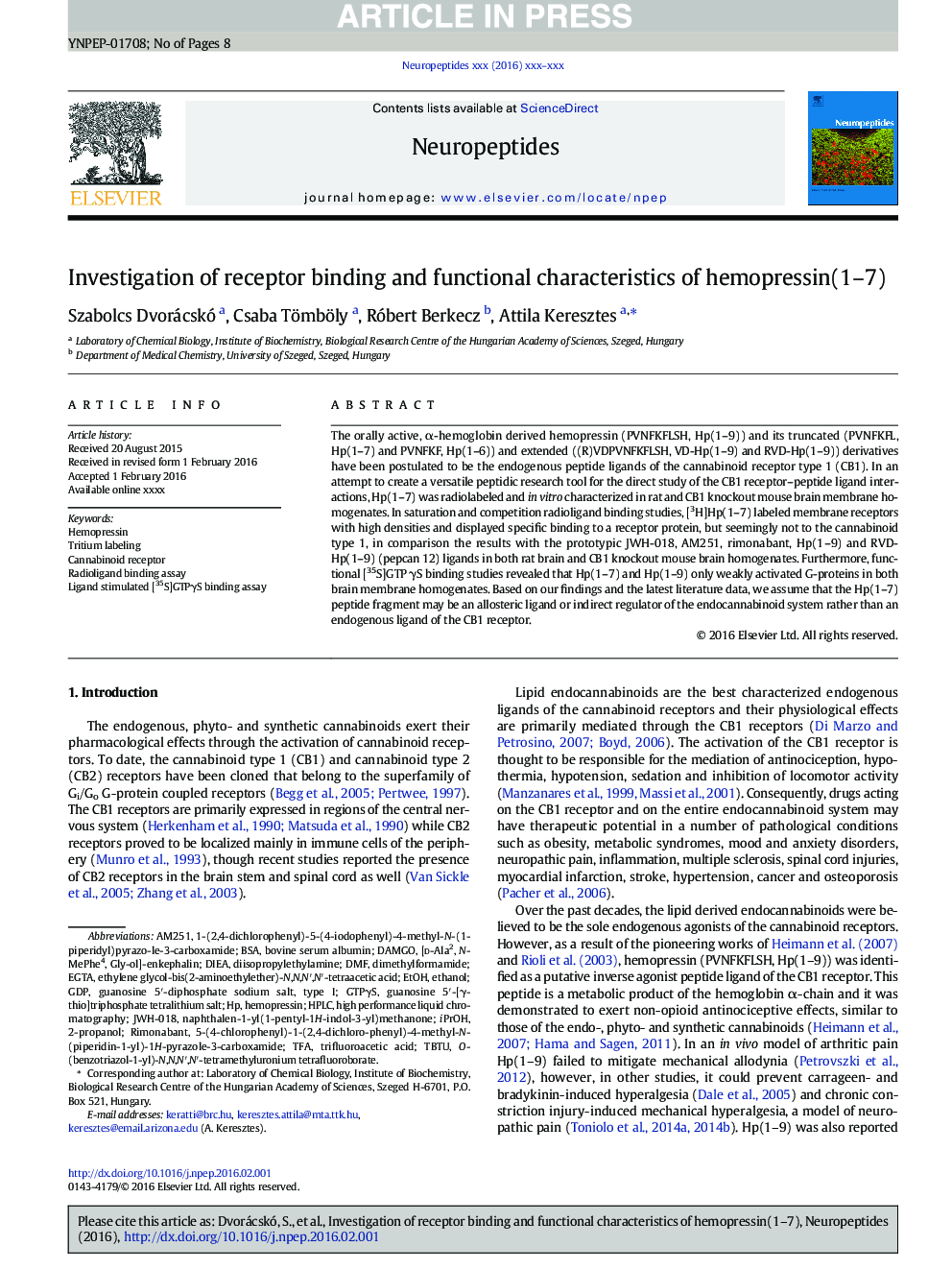| Article ID | Journal | Published Year | Pages | File Type |
|---|---|---|---|---|
| 5904047 | Neuropeptides | 2016 | 8 Pages |
Abstract
The orally active, α-hemoglobin derived hemopressin (PVNFKFLSH, Hp(1-9)) and its truncated (PVNFKFL, Hp(1-7) and PVNFKF, Hp(1-6)) and extended ((R)VDPVNFKFLSH, VD-Hp(1-9) and RVD-Hp(1-9)) derivatives have been postulated to be the endogenous peptide ligands of the cannabinoid receptor type 1 (CB1). In an attempt to create a versatile peptidic research tool for the direct study of the CB1 receptor-peptide ligand interactions, Hp(1-7) was radiolabeled and in vitro characterized in rat and CB1 knockout mouse brain membrane homogenates. In saturation and competition radioligand binding studies, [3H]Hp(1-7) labeled membrane receptors with high densities and displayed specific binding to a receptor protein, but seemingly not to the cannabinoid type 1, in comparison the results with the prototypic JWH-018, AM251, rimonabant, Hp(1-9) and RVD-Hp(1-9) (pepcan 12) ligands in both rat brain and CB1 knockout mouse brain homogenates. Furthermore, functional [35S]GTP γS binding studies revealed that Hp(1-7) and Hp(1-9) only weakly activated G-proteins in both brain membrane homogenates. Based on our findings and the latest literature data, we assume that the Hp(1-7) peptide fragment may be an allosteric ligand or indirect regulator of the endocannabinoid system rather than an endogenous ligand of the CB1 receptor.
Keywords
DMF5-(4-chlorophenyl)-1-(2,4-dichloro-phenyl)-4-methyl-N-(piperidin-1-yl)-1H-pyrazole-3-carboxamideO-(benzotriazol-1-yl)-N,N,N′,N′-tetramethyluronium tetrafluoroborateiPrOHTritium labelingDIEAJWH-018EtOHEGTATFATBTU[D-Ala2, N-MePhe4, Gly-ol]-enkephalinGTPγSAM2512-PropanolBSADAMGObovine serum albuminEthanolethylene glycol-bis(2-aminoethylether)-N,N,N′,N′-tetraacetic acidTrifluoroacetic acidGDPdiisopropylethylaminedimethylformamideRimonabantRadioligand binding assayhemopressinhigh performance liquid chromatographyHPLCcannabinoid receptor
Related Topics
Life Sciences
Biochemistry, Genetics and Molecular Biology
Endocrinology
Authors
Szabolcs Dvorácskó, Csaba Tömböly, Róbert Berkecz, Attila Keresztes,
